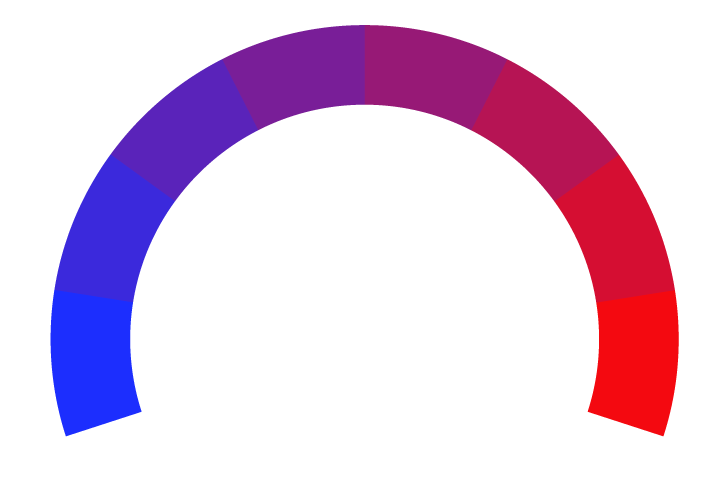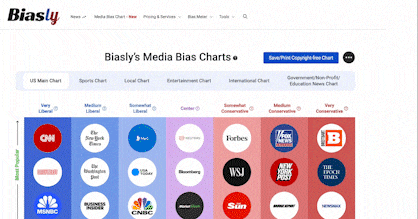Illinois sues over National Guard deployment as Trump continues campaign against Democratic states
- Bias Rating
- Reliability
35% ReliableAverage
- Policy Leaning
-50% Medium Left
- Politician Portrayal
-36% Negative
Continue For Free
Create your free account to see the in-depth bias analytics and more.
By creating an account, you agree to our Terms and Privacy Policy, and subscribe to email updates.
Bias Score Analysis
The A.I. bias rating includes policy and politician portrayal leanings based on the author’s tone found in the article using machine learning. Bias scores are on a scale of -100% to 100% with higher negative scores being more liberal and higher positive scores being more conservative, and 0% being neutral.
Sentiments
-16% Negative
- Liberal
- Conservative
| Sentence | Sentiment | Bias |
|---|---|---|
Unlock this feature by upgrading to the Pro plan. | ||
Reliability Score Analysis
Policy Leaning Analysis
Politician Portrayal Analysis
Bias Meter
Extremely
Liberal
Very
Liberal
Moderately
Liberal
Somewhat Liberal
Center
Somewhat Conservative
Moderately
Conservative
Very
Conservative
Extremely
Conservative
-100%
Liberal
100%
Conservative

Contributing sentiments towards policy:
50% : Trump then issued another memorandum calling up 300 Illinois National Guard troops, reinforcing Hegseth's previous order.50% : If I had to enact it, I'd do that," Trump said.
50% : I mean, that's pure insurrection," Trump said.
50% : Trump has ordered them to Los Angeles, Chicago, Washington, DC and Portland, prompting lawsuits from state and local leaders.
50% : Courts have not yet reached a final decision in any of those cases, but judges in California and Oregon have made initial rulings that Trump likely overstepped his authority.
50% : You could go to Afghanistan, you can go to a lot of different places, and they probably marvel at how much crime we have," Trump said.
47% : Shortly after Perry's ruling, Trump told reporters in the Oval Office he might invoke the Insurrection Act of 1792, which would allow troops to directly participate in civilian law enforcement, for which there is little recent precedent.
44% : The Illinois lawsuit alleges the Republican president is deploying the military to Illinois based on a "flimsy pretext" that an ICE facility in a suburb of Chicago needs protection from protesters.
41% : " Later, when asked in an interview with Newsmax television whether he would invoke the law, Trump repeated that he would only use it if necessary, and then referenced Portland, Oregon, where the mayor and governor oppose deploying the National Guard to quell protests.
35% : Trump has expanded the use of the US military in his second term, which has included deploying troops along the US border and ordering them to kill suspected drug traffickers on boats off Venezuela without due process.
34% : Illinois Governor JB Pritzker, in a press conference, accused Trump of unnecessarily escalating tensions by attempting to add National Guard troops to heavily armed federal police from Immigration and Customs Enforcement and other agencies already operating in Chicago.
33% : Trump, responding to Pritzker, reiterated his contention that Chicago was "like a war zone," saying Pritzker and Chicago Mayor Brandon Johnson had lost control.
23% : Trump then escalated the widening clash with Democratic-led states and cities over the domestic use of military forces, threatening to invoke the Insurrection Act as a means to circumvent court restrictions on deploying troops where they are unwanted by local officials.
13% : Today, Democratic-led states and cities are pushing back against Trump's attempt to deploy military forces into cities, which the White House says are needed to protect federal government employees from "violent riots" and "lawlessness". Democratic leaders counter that their cities are being illegally targeted and falsely portrayed as awash in crime.
*Our bias meter rating uses data science including sentiment analysis, machine learning and our proprietary algorithm for determining biases in news articles. Bias scores are on a scale of -100% to 100% with higher negative scores being more liberal and higher positive scores being more conservative, and 0% being neutral. The rating is an independent analysis and is not affiliated nor sponsored by the news source or any other organization.






















 Firstpost
Firstpost